Semi Precious Stones – A Guide for Buyers from Laurelle Antique Jewellery
Most people are familiar with the so-called “big four” precious gemstones. Diamonds, rubies, sapphires and emeralds are widely known as the most desirable and valuable gemstones, but there are a staggering array of other stones that have been worked into jewellery over the years. We’ve created this handy guide to some of the lesser known gemstones, their own particular charms, and a little bit of history, to showcase the wondrous diversity in precious stones.
Agate
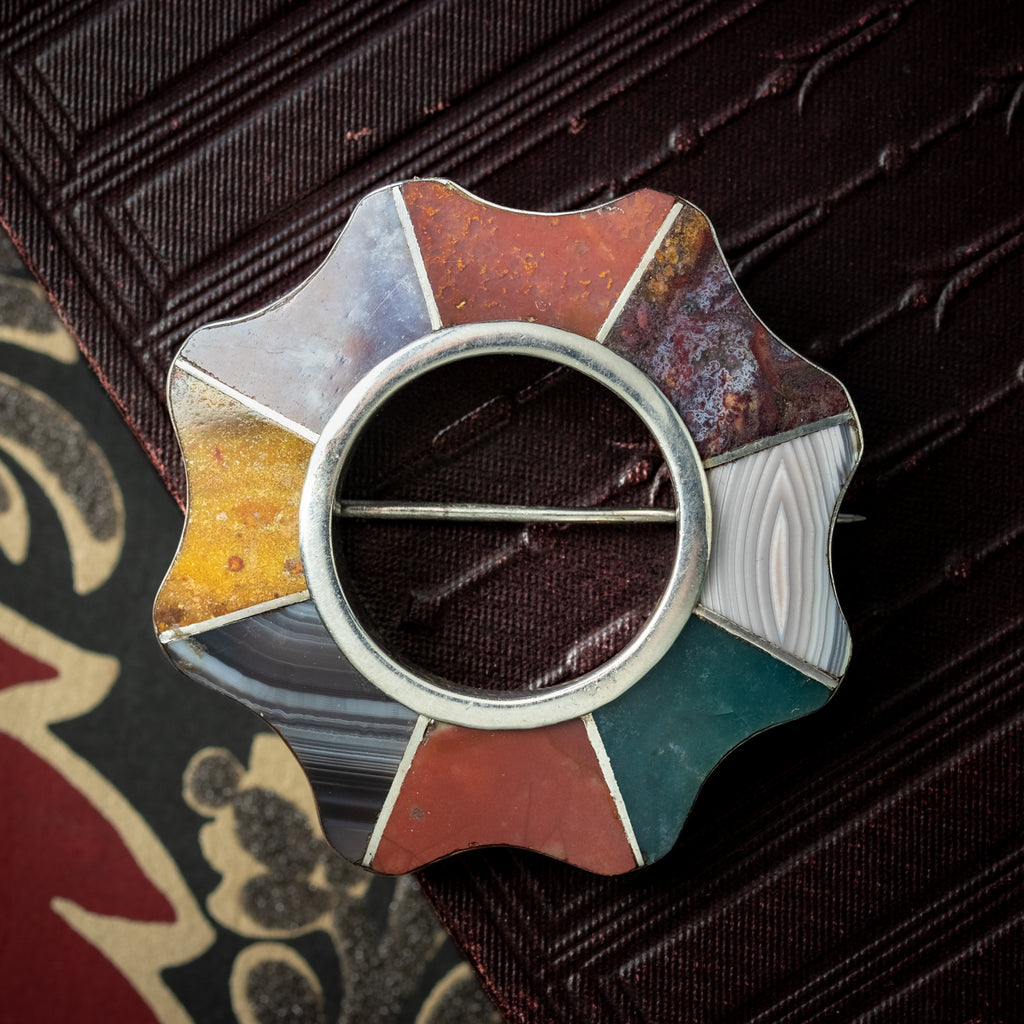
Agate is arguably the most varied gemstone of all. There are dozens of types of agate with strange and unique combinations of colours and patterns. This has earned agate the nickname “The Earth Rainbow”.
Agate can be found on every continent on earth, and every culture has worked the stone into magnificent pieces of jewellery. The stone is relatively easy to work with, so has been carved into a myriad of shapes with simple tools.
One of the most desirable forms of antique agate jewellery in the western world originated in Scotland. Predominantly worked into silver, these pieces contain large, smoothly cut pieces of agate showing off their bands or swirls of different colours.
View our collection of agate jewellery
Aquamarine
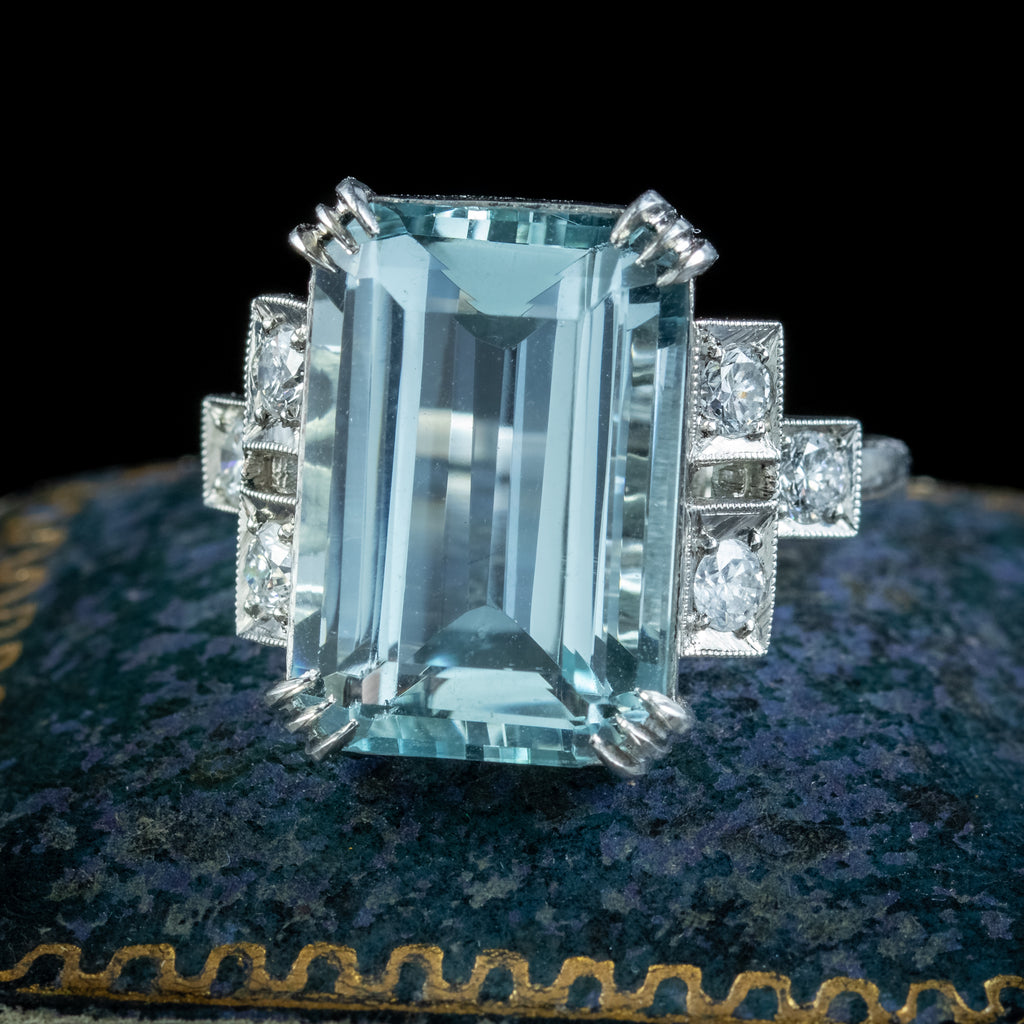
These ocean blue stones are a form of beryl, the same mineral that gives us emerald. They are often shaped into the emerald cut, as the long, straight facets highlight the stone’s clarity.
Gem-quality aquamarines are free from inclusions, the tiny fissures within stones, and can have a green-blue or sky blue tint. Historically greener stones were more valued in the east and bluer stones in the west.
Aquamarine was incredibly popular in the Art Deco period, where it was often paired with white gold or platinum to highlight its cool hue.
View our collection of aquamarine jewellery
Amethyst

This beautiful purple stone was once ranked alongside the “big four” in terms of value. Together these five stones were known as the Cardinal Gemstones. Amethyst was treated with the same care and attention as the others, and adorns some truly wonderful pieces of antique and vintage jewellery.
In the early 19th century large reserves of amethyst were found in Brazil, and as gem-quality specimens became more numerous its value lessened. Amethyst is still a beautiful stone, and well suited for use in jewellery, but modern stones are considerably more affordable than they were.
View our collection of amethyst jewellery
Carnelian
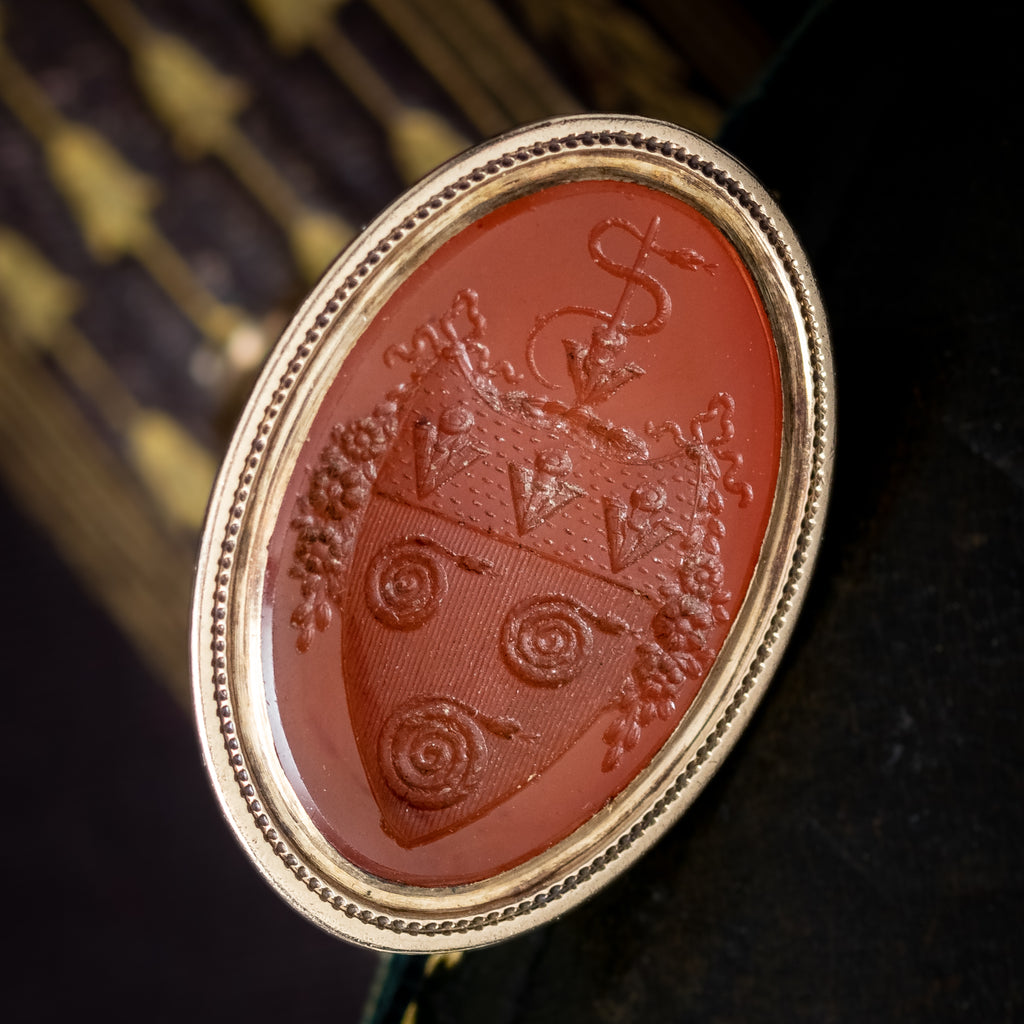
This red-orange stone has been formed into beaded jewellery since the early stone age, making its use in jewellery about as old as agriculture. It is extremely fine grained and hard-wearing, and comes in an even harder, darker form known as sard.
Carnelian can be carved into extremely detailed and elaborate patterns, which made it extremely well suited to the creation of seals, which were embedding into rings and fobs to make wax impressions in official documents.
Some pieces of carnelian jewellery can be of high historical importance, depending on whose crest they bear.
View our collection of carnelian jewellery
Chalcedony

Many semi precious gemstones are forms of chalcedony, including agate, bloodstone, carnelian and onyx. The difference in these stones are caused by minor chemical differences, which can cause radically different colours and patterns.
Where chalcedony is described as such in jewellery it tends to be in its green or white variety, which is a waxy, mildly translucent stone that is often carved into interesting shapes. Most varieties of chalcedony take well to carving and are tough enough to hold their form, making chalcedony jewellery some of the most varied and interesting pieces.
View our collection of chalcedony jewellery
Citrine
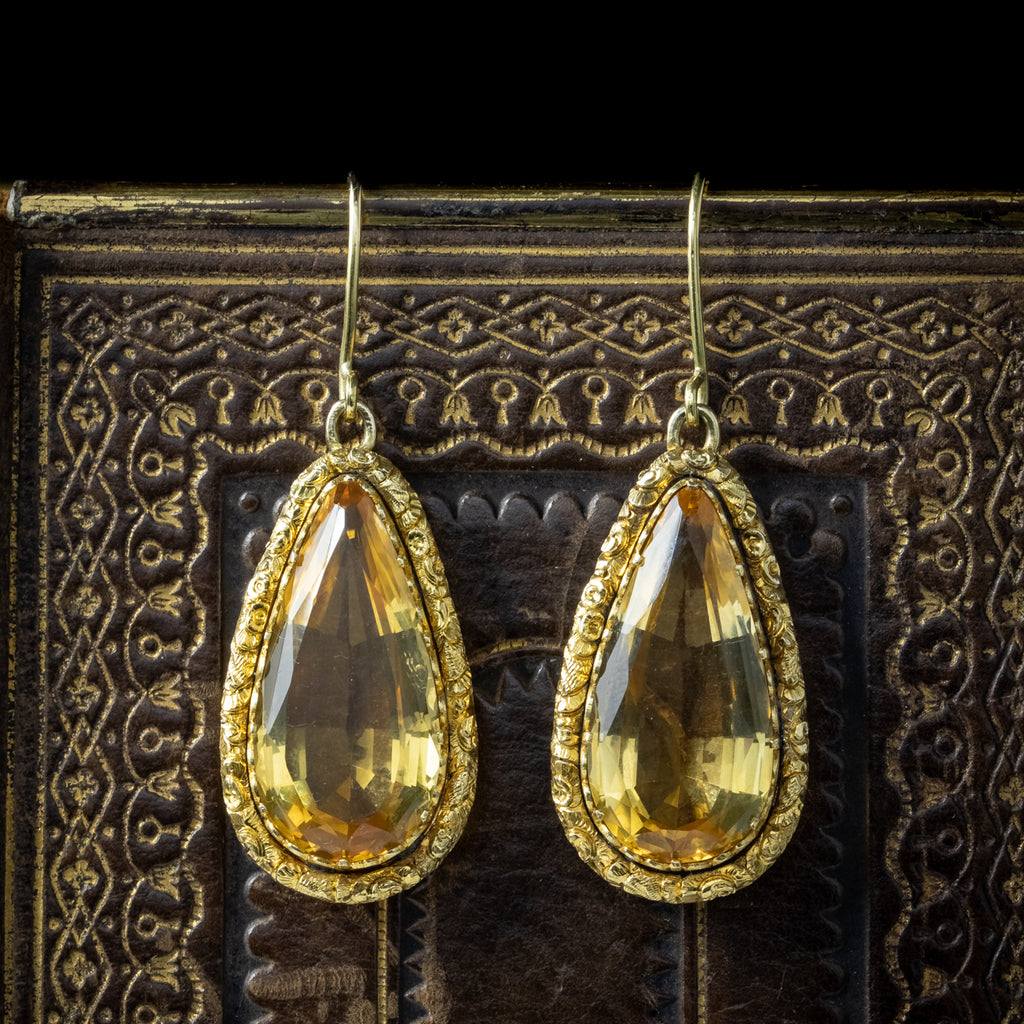
This honey-golden gemstone was a favourite of Queen Victoria and can be found in many pieces of Victorian jewellery. It is an almost identical mineral to amethyst, but is formed in higher temperatures. It is actually possible to transform an amethyst into a form of citrine by exposing it to extreme heat.
In some places where citrine is found the heat which formed it has not affected the stone uniformly, leading to crystals which are purple on one side and golden yellow on the other. This gemstone is known as ametrine.
View our collection of citrine jewellery and citrine antique engagement rings.
Garnet

Garnet is a deep crimson crystal gemstone which has been used in jewellery since the bronze age. Although red is the most common form of garnet it can be found in green, and extremely rare blue varieties.
It is an extremely hard material, making it ideally suited to use in jewellery, but it has also historically been used to craft tools used in abrasion.
Garnet was particularly popular in the late Victorian period, as it’s deep crimson paired well with the darker, more sombre colours and themes of the time.
View our collection of garnet jewellery
Jade
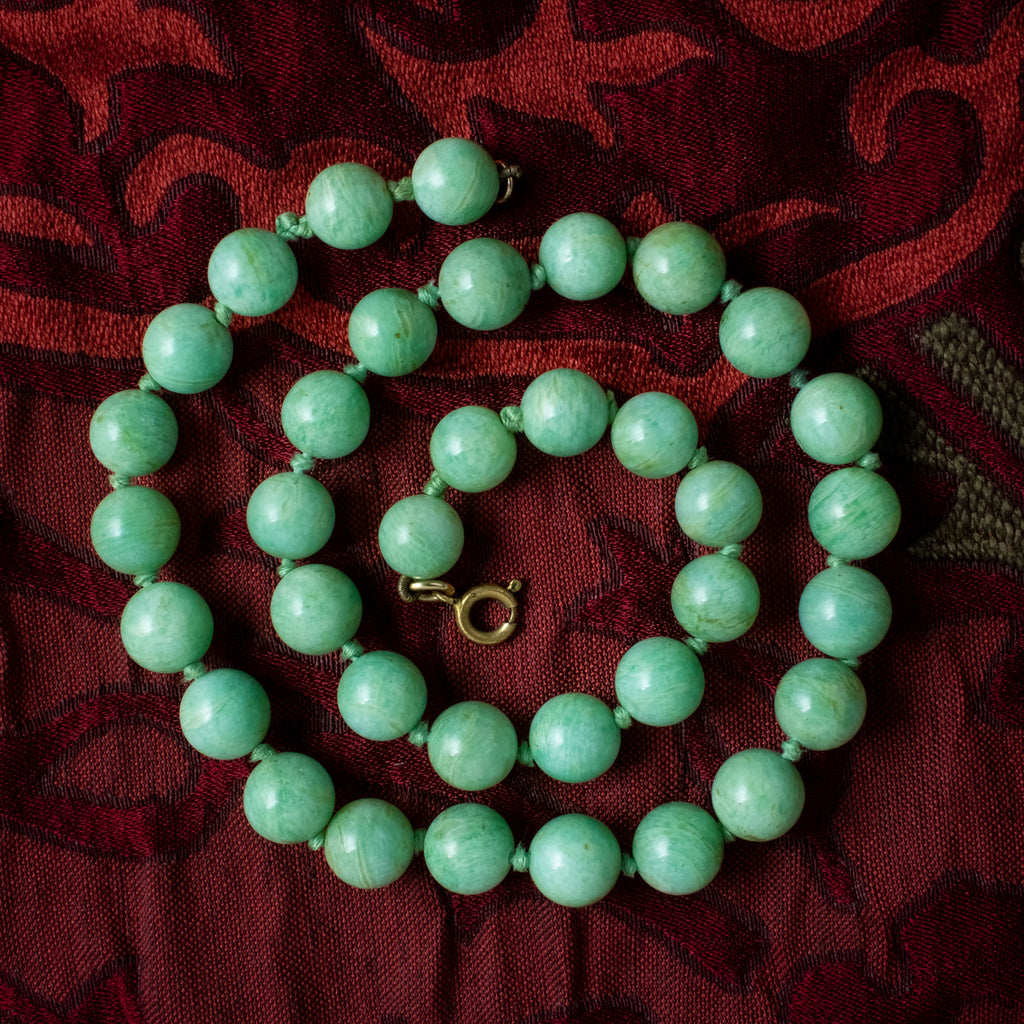
This pale green gemstone is extraordinarily fine-grained, meaning that it can take incredibly detailed carving. Many of the most wondrous pieces of jade jewellery and ornaments come from China, where it was associated with the Emperor and held great value.
Jade has a translucent lustre that makes it appear slightly otherworldly. Its colour can vary, and some types of jade are banded with multiple different hues. Although green jade is most common there are types which show every colour of the rainbow, in addition to black and white.
View our collection of jade jewellery
Moonstone

These ethereal stones were once believed to be solidified moonlight, which is understandable given their unique reaction to light. They are usually cut en cabochon, which allows their pearly schiller to truly shine.
Being associated with the moon jewellery inlaid with moonstones tends to be overtly feminine, as the moon has long been associated with benevolent goddesses like the Greek deities Luna, Diana and Hecate.
View our collection of moonstone jewellery
Opal

Opals show what is arguably the most elaborate lustre of any gemstone. Every opal contains an array of cloud-like formations within it that catch the light in different ways. This means that when an opal is moved it displays bright nebulae of shimmering colours that can be starkly different from the colour of the host stone.
There are many different forms of opal, including the bright orange fire opal and the dark black opal, but the most commonly used in jewellery are light blue with flashes of green, orange and red within them.
View our collection of opal jewellery
Paste

Simulated gemstones formed from heavy flint glass, paste stone has been crafted since ancient times and requires tremendous skill to create. The name comes from the process of creating it, where a paste is formed and left to cool before being faceted and shaped like a true gemstone.
Paste stones sparkle like true gems, and can be made in any colour imaginable. Pieces of paste jewellery from every era can be found, and in many cases these pieces are just as valuable as more typical jewellery.
Modern simulated gemstones tend to use more advanced processes, so the use of paste as a counterfeit has mostly ceased. Nowadays it is valued on its own merit as an example of the craftsmanship of a particular era.
View our collection of paste jewellery
Pearl

Pearls are created within the bodies of marine creatures such as oysters and clams. They are formed from a substance called nacre, which is repeatedly layered around an irritant so that a smooth, tough outer surface forms. The surface of a pearl is composed of many semi-translucent layers which form a shimmering effect that is unique and highly desirable.
All genuine pearls must form within a living creature, but is now possible to culture pearls in a form of underwater farming. Antique pearls often had to be found and gathered in the wild, without the benefit of modern technology, and are thus much more valuable.
View our collection of pearl jewellery or antique pearl engagement rings.
Peridot

Peridot is a bright green stone which is often included in antique Suffragette jewellery. It was known as the “Evening Emerald” and gem-quality specimens are clear, free from inclusions, and sparkle magnificently when faceted by a skilled lapidary.
The stone is rare amongst gems in that it only appears in one colour, with very little variation from stone to stone. It is also relatively rare, as it can be damaged by long exposure to the elements, so must be excavated with care. Interestingly it has also been found within meteorites which have struck the earth.
View our collection of peridot jewellery
Spinel
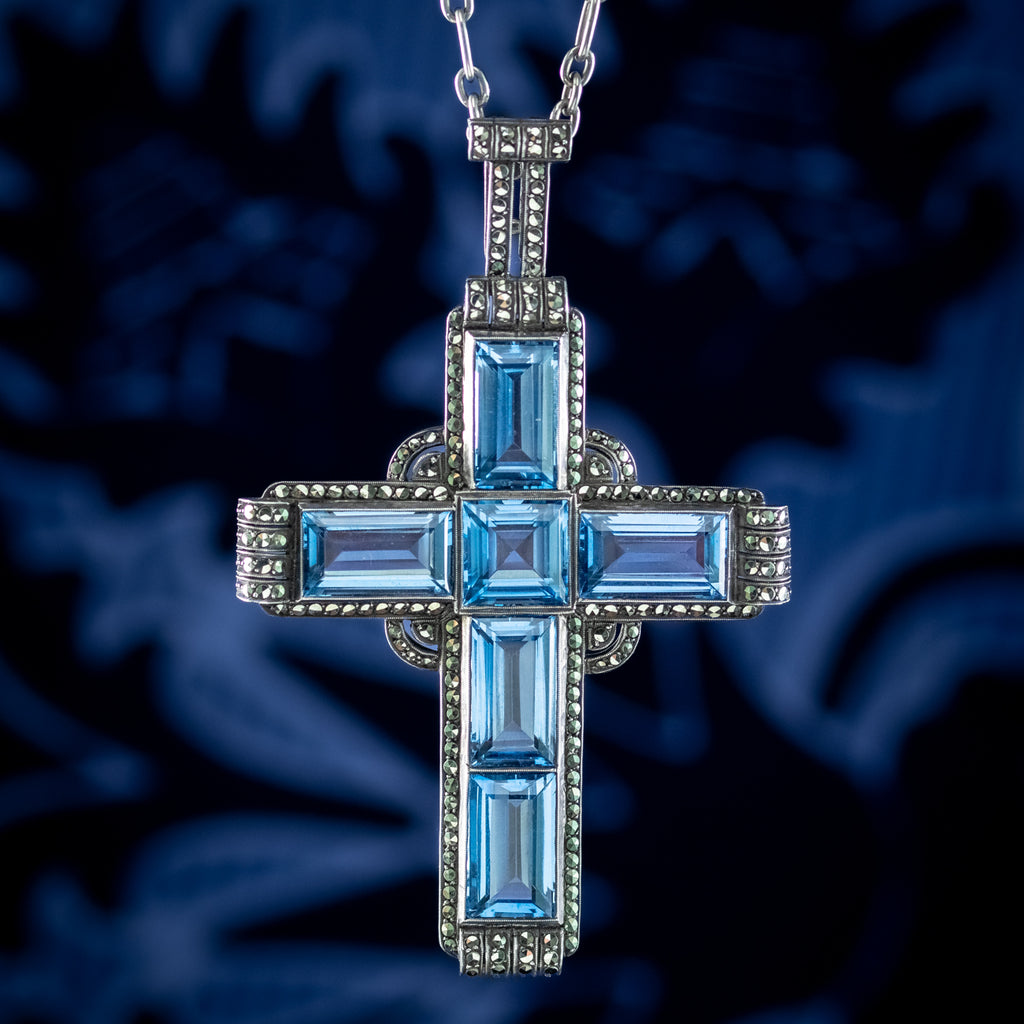
This interesting gemstone has a long history of being mistaken for other precious stones. Some of the largest and most impressive rubies in the world, even those contained within the Crown Jewels of many monarchies, have later been discovered to be particularly beautiful spinels instead.
Spinels can be found in a great variety of colours, and they are actually a little harder than the rubies and sapphires they are so often mistaken for, making them ideal stones for fashioning into jewellery.
View our collection of spinel jewellery
Topaz
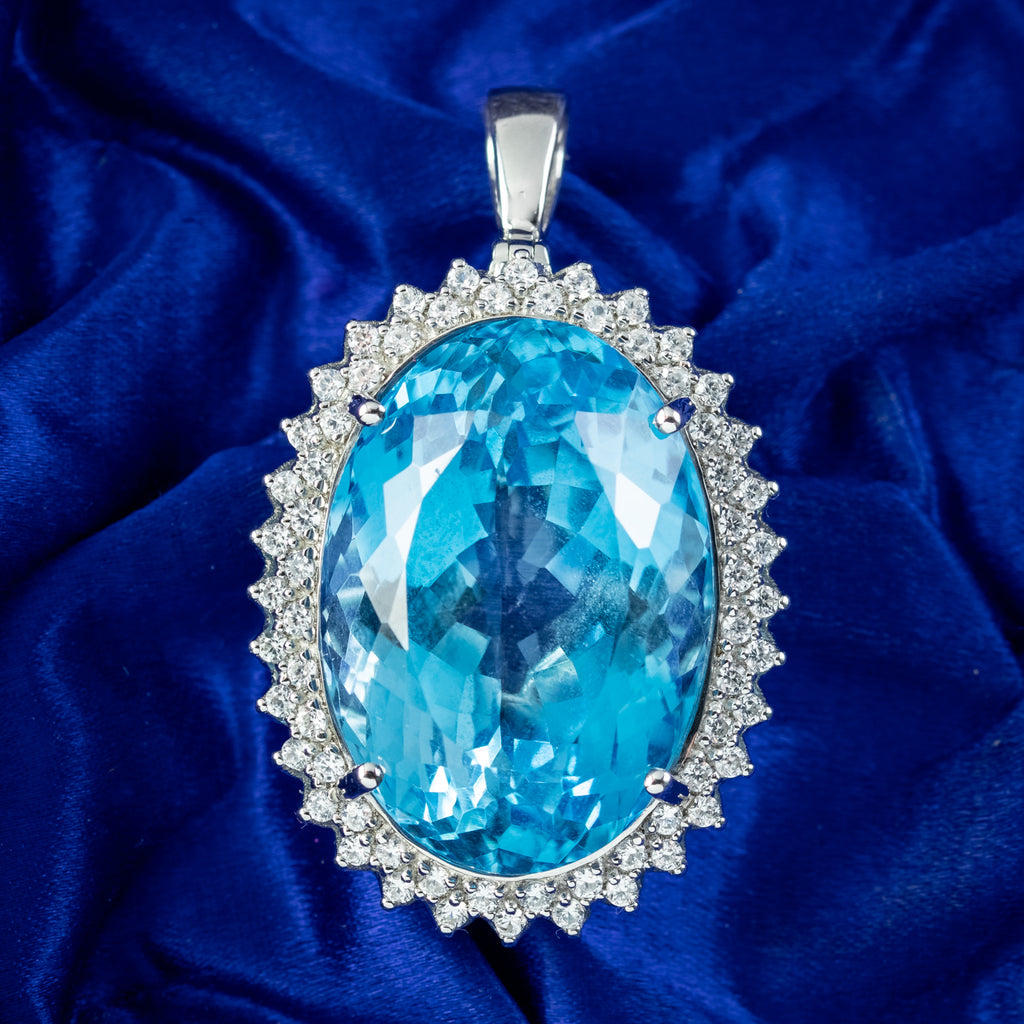
Topaz is a transparent and relatively abundant gemstone which can be found in a wide variety of different colours. The most valuable and highly prized topazes are the golden “precious topaz” and a pale blue variant, although any topaz is hard enough to perform well in jewellery, and sparkle beautifully when cleverly cut.
Topaz takes well to heat and radiation treatment, which can alter its colour and composition, but gem quality specimens in antique jewellery were very rare and the pieces which contain them were crafted using the same care and attention reserved for the most precious of stones.
View our collection of topaz jewellery
Tourmaline
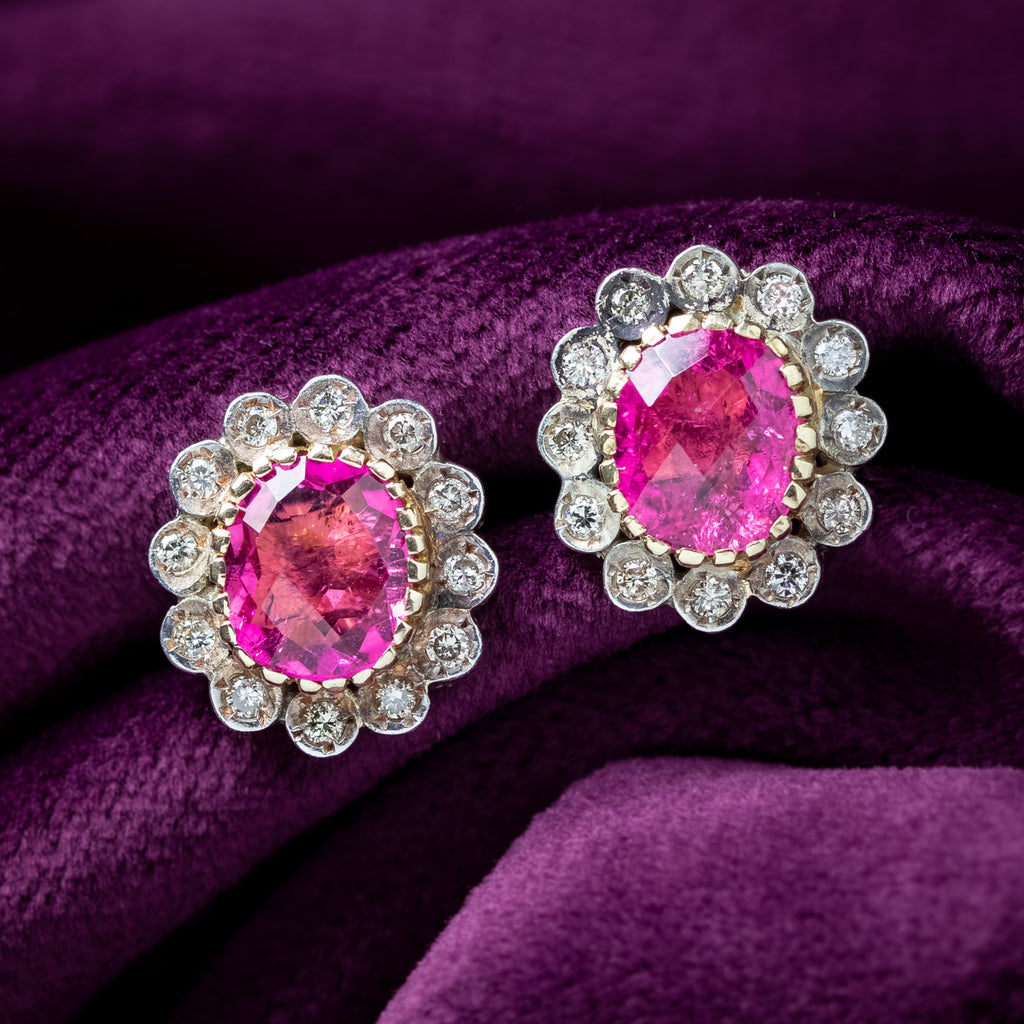
This interesting gemstone is most commonly black, but varieties can be found in a great array of different colours, and many specimens show bands of multiple different hues.
Tourmaline polarizes light, creating beautiful displays when faceted. It also exhibits strange pyroelectric properties which causes it to become magnetic when heated, making it unsuitable for heat treatment. This means that tourmaline on the market shows it original, natural colour.
View our collection of tourmaline jewellery
Zircon

This mineral is common in the crust of the earth, but most zircon is unsuitable for jewellery as it is mainly found in a slightly unattractive reddish brown colour resembling rust. It is only the pale blue or completely clear transparent varieties which are valued as a gemstone. These stones have a high refractive index, making them sparkle like diamonds when cut correctly.
Zircons have high specific gravity, making them heavier than diamonds, and they are hard enough to take on all of the cuts which a diamond can.
View our collection of zircon jewellery
If you have any questions about the pieces which we sell feel free to get in touch on England: 0333 700 4500 or send us an email via enquiries@antiquejewellerygroup.com. Our team is always happy to help!



